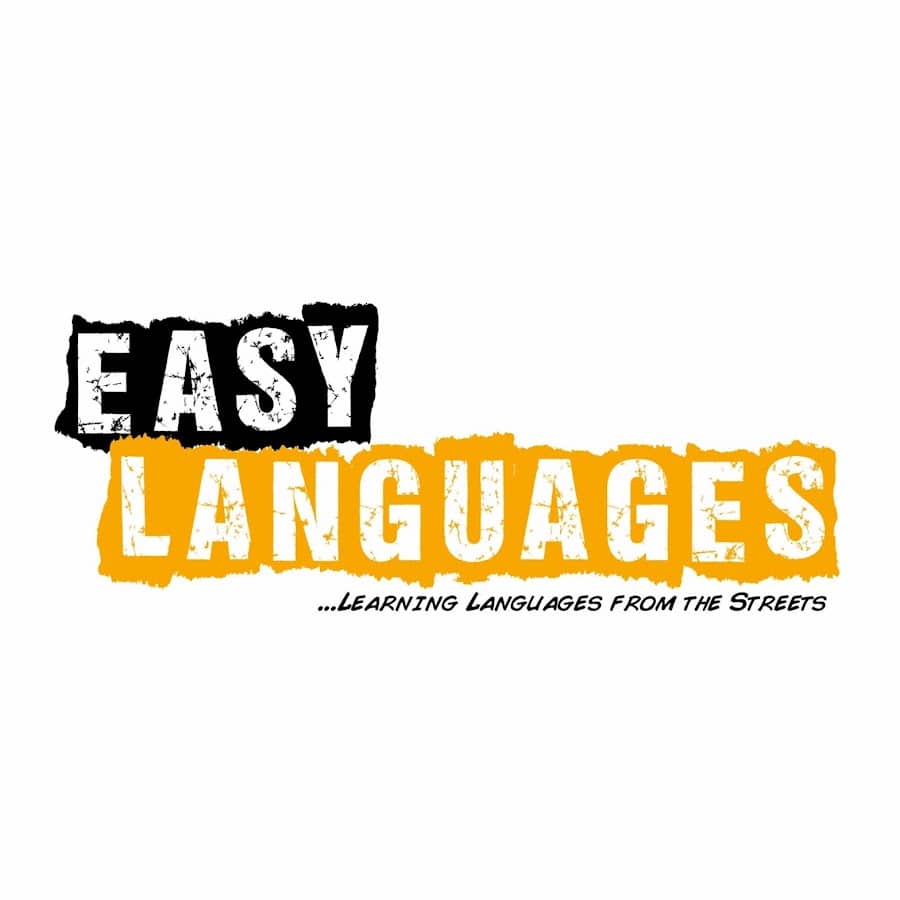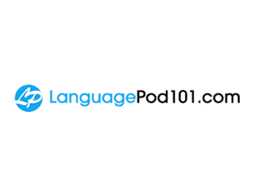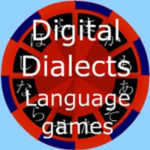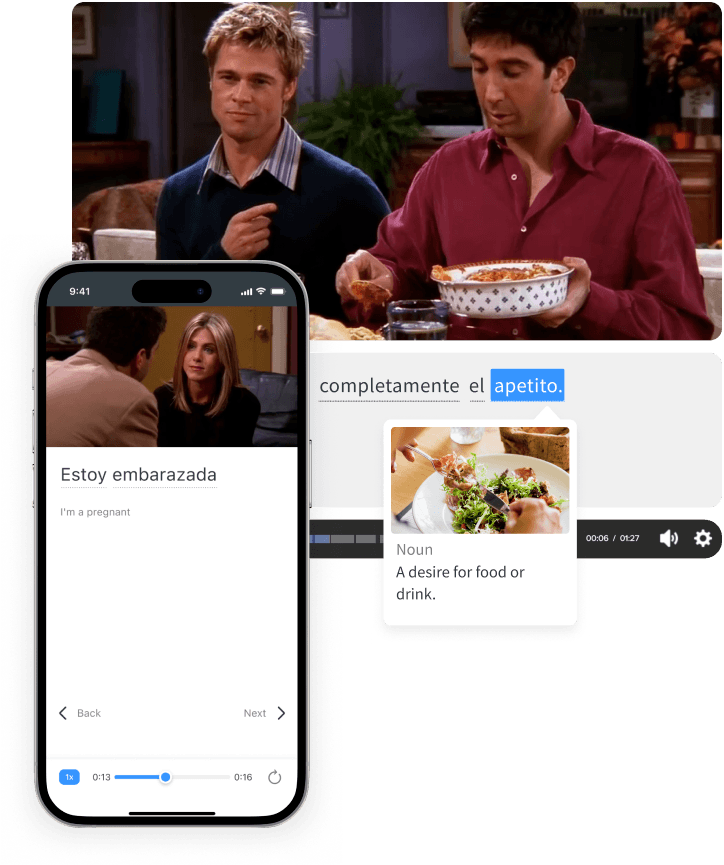
32 Free Language Learning Websites to Try in 2024
A tight budget is no longer an excuse to not learn a language. Not when the internet is at our fingertips!
Websites and smartphone apps have brought the world closer to us—and its thousands of languages.
The benefits of learning a new language no longer have to come with a hefty price tag—or any price tag at all!
Whether you prefer flashcards or face-to-face interaction, want to learn Amharic or Zulu, are a novice or near-native, here are 32 free language learning websites you can use to fine-tune your language skills without spending a cent.
Contents
- General Language Learning Websites
- Video-based Language Learning Websites
- Massively Open Online Courses (MOOCs)
- Free Language Exchange Websites
- Language Learning Websites for Reading Skills
- Language Learning Websites for Writing Skills
- Free Websites for Getting Language Help
- Free Websites for Vocabulary and Flashcards
- Free Learning Websites for Specific Languages
- How to Learn a Language with Free Websites
- And One More Thing...
Download: This blog post is available as a convenient and portable PDF that you can take anywhere. Click here to get a copy. (Download)
General Language Learning Websites
When most of us think about taking a language course, we picture a classroom full of wobbly desks, and potentially a three- or four-digit tuition fee.
These free language learning websites offer online courses and other general knowledge about a wide variety of languages, so you can keep the structure and formality of a traditional course but skip the fees.
1. Live Lingua
Available languages: Arabic, French, Japanese, Russian, Cantonese, Tagalog and many more.

It’s not hard to believe. There are thousands of free e-books, audio recordings and foreign language video materials available in over 130 different languages.
It’s also one of the most user-friendly websites hosting the US Foreign Service Institute’s public domain language courses, which were developed by the US Department of State for expert language learning and are now freely available on various sites across the web.
See our full review of all of Live Lingua’s offerings here.
2. Learn a Language
Available languages: English, Spanish, German, Chinese, Greek, Norwegian and more.
 Learn a Language contains vocabulary, phrases, courses, games and activities for a number of popular languages.
Learn a Language contains vocabulary, phrases, courses, games and activities for a number of popular languages.
You can learn over 1,400 words in your target language for free with their vocabulary lists and verb conjugation charts, and there’s plenty more free learning to be done in the actual courses.
3. Open Culture
Available languages: Spanish, Chinese, Arabic, Icelandic, Korean, Swedish and many more.

When it comes to languages, they’re not bluffing.
Their free courses and materials contain language learning resources from governments, universities and respected private institutions worldwide, so you can find free lessons without sacrificing quality.
4. Internet Polyglot
Available languages: Dutch, German, Japanese, Ukrainian, Spanish, French and many more.

This allows you to choose what language you’re learning and the language you’re learning it in.
Do you already speak Spanish and want to get started on Portuguese? Select “Spanish” for your language, and start with a composite mental exercise to strengthen one language while building another.
5. Omniglot
Available languages: Arabic, Hebrew, Gaelic, Gujarati, Korean, Thai and many, many more.

This online encyclopedia of languages and writing systems is like the Wikipedia of all things linguistics.
Not only does it provide linguistic and cultural information on hundreds of world languages, but it also offers some of its own free video lessons.
6. LanguageGuide.org
Available languages: Spanish, Turkish, Korean, Portuguese, Hindi, Polish and more.

The lessons are perfect for both audio and visual learners because they incorporate images with each audio file. Some exercises are already set to an advanced level by default, but you can adjust the difficulty level in the settings.
When it’s time to test your knowledge, you can do so with both the speaking and listening challenges.
Video-based Language Learning Websites
Turning on the TV is great for language learning.
If you want your brain to soak up the sights and sounds of actual everyday speech and how it’s used in your target language, tune in and kick back for some quality input-based learning with these free websites.
7. Easy Languages
Available languages: Catalan, French, Italian, Russian, Dutch, Czech and more.

The videos feature on-the-street interviews with locals, who discuss language, culture and life in general. Note the name—you don’t need advanced-level skills to enjoy the material!
Not only can these videos help you practice listening to authentic spoken language, but they can also give you valuable insight into local culture.
Videos include subtitles in the target language and English. While not all the language channels are active anymore, there’s still a lot of pre-existing content for learners of a number of languages.
8. Streema
Available languages: Spanish, Korean, Gujarati, Arabic and many more.

This is an especially exciting resource if you’re learning a less commonly studied language with limited video materials available.
Tuning into your favorite Albanian or Nepali TV station can easily compensate for the lack of other learning materials online.
9. LanguagePod101.com
Available languages: Afrikaans, Cantonese, Filipino, Greek, Italian, Turkish and many more.
 LanguagePod101.com offers free video and audio lessons in over 40 languages made by professional teachers.
LanguagePod101.com offers free video and audio lessons in over 40 languages made by professional teachers.
It’s typically updated with new lessons every week, with material for beginner to advanced learners and including grammar, vocabulary, everyday conversations and culture.
You’ll be directed to language-specific sites once you enter your email and pick a language. Some offerings include SpanishPod101, FrenchPod101, GermanPod101, ChineseClass101 and RussianPod101, among many others.
While there is the option to pay for additional content and learning tools, LanguagePod101.com has thousands of professionally produced audio and videos for free.
10. YouTube
Available languages: Spanish, French, German, Chinese, Japanese, Korean and many, many more.

Beyond language learning channels by a wide variety of teachers in an even bigger array of languages, there’s also the option of finding movies, TV shows, commercials, talks and more.
YouTube is also a fantastic resource if you’re studying a less common language. The channel Wikitongues, for example, contains numerous videos of rare languages and unique regional dialects.
After checking the main site for whatever you’re looking for, you can also look through YouTube’s Movies & TV section. Some options here do require payment, but some are free (typically with ads).
Massively Open Online Courses (MOOCs)
Many world universities are making lesson materials and entire courses online for free. Here are some of the best MOOCs for learning a language.
11. MIT Open Courseware
Available languages: Chinese, Japanese, Portuguese, Spanish, French, German and other related topics.

Under the “Global Studies and Languages” section of the website, you’ll find courses ranging from Chinese II to Contemporary French Politics.
The courses are designed to help you engage with the language and its greater cultural context. Courses are available to download.
12. edX
Available languages: Japanese, French, Spanish, Arabic, Chinese, Italian and related topics.

You might take a dedicated language class or a topic course in your target language if you’re more advanced. For example, you could sign up to take an algebra class entirely in Spanish!
Some courses have certificates you can get for completing them. In general, it does cost money to get a verified certificate, so make sure you check the details before you sign up. Additionally, you may be able to get college credit, depending on your course.
13. Coursera
Available languages: Korean, Chinese, Spanish, French, Russian and more.

Many courses will be geared toward beginners (like First Step Korean) and others will engage more generally with language learning (like Miracles of Human Language).
Note that not all courses are free, but many are. Additionally, you can take them at much the same rate you would an actual university course (a few months) or speed up the process and go at your own pace.
Whatever you find here, it’s coming from a respected university or educational institute, and if it’s not on offer now, sign up to get an alert when it is.
14. Alison
Available languages: French, Irish, Japanese, Swedish, Spanish, Chinese and more.

Best of all, if you complete all modules and score at least 80% on all your course assignments, you’ll be rewarded with a fancy (and free) certificate!
Free Language Exchange Websites
The biggest secret to effective language learning isn’t a secret at all: You’ve gotta talk! And who better to talk with than a native speaker?
It’s okay if you can’t hop on a plane this weekend—instead, just click over to one of these websites, where you can connect with native speakers of your target language for free.
15. The Polyglot Club
Available languages: Chinese, Vietnamese, Turkish, Danish, French, Estonian and many more.

You can find language exchange partners, submit written texts for correction, hang out in chat rooms, browse through target language videos and attend language events and meetups.
If you scroll all the way to the bottom of the link above, you’ll also find “from scratch” introduction courses to many common and not-so-common languages.
16. Tandem
Available languages: Japanese, Spanish, Portuguese, French, Chinese, German and more.

Tandem allows you to exchange audio calls, video calls, texts and voice messages.
Tandem can even hook you up with text translations in the app if you need extra support to chat more easily, making Tandem a great choice for beginning learners.
See our complete Tandem review here.
Language Learning Websites for Reading Skills
As one of the major language skills, reading is a great way to both grow your abilities and practice what you’ve already learned.
These free sites can help make reading in a foreign language simpler and more efficient.
17. Readlang
Available languages: Spanish, German, French, Russian, Polish, Norwegian and many more.

Once you’ve installed it, you can go to any website in your target language and click any word you don’t know for an instant translation. Words you click are saved so you can practice them with flashcards.
Readlang also has some great content to get you started on the right path if you don’t feel like sourcing your own. You can filter the library selections by difficulty level, word count and category, too.
18. Lingua.com
Available languages: Czech, Danish, Spanish, French, Turkish, Polish and more.
![]() Lingua.com offers plenty of authentic reading material, like dialogues, short stories and articles. Texts are conveniently organized by level.
Lingua.com offers plenty of authentic reading material, like dialogues, short stories and articles. Texts are conveniently organized by level.
Readings are usually brief, and each is accompanied by questions to test your comprehension. Once you complete the questions, the website will suggest additional texts you might enjoy, making it easy to keep your reading practice going.
If you prefer printed exercises, Lingua.com also offers printable PDFs that feature both the reading, associated questions and answers to the questions.
Language Learning Websites for Writing Skills
Writing in your target language will help you learn proper digital communication and give you practice producing the language on your own.
Try out one of these websites to take your writing abilities for a spin for free.
19. MyLanguageExchange.com
Available languages: Arabic, Hawaiian, Icelandic, Persian, Spanish, Chinese and many more.

This website focuses on connecting users for an email-based pen pal relationship, and they provide helpful tips to make sure you both get the most out of the exchange.
You can browse for pen pals by language or country. An advanced search provides an even broader array of criteria, like city, age, gender and more.
20. Reddit
Available languages: Italian, Spanish, Portuguese, Japanese, German and more.

There are several subreddits in foreign languages, so you can snag the writing (and reading) practice you’re looking for.
And let’s be real—someone will be prepared to correct your grammar. This is the internet, after all.
Most foreign language forums are subreddits for foreign countries—like the Italy subreddit, the Mexico subreddit or the Brasil subreddit—but there may be subreddits for learners of certain languages too, such as r/LearnJapanese or r/German.
Free Websites for Getting Language Help
Perhaps you’re not ready to fork out money for a private tutor, or you don’t have the time to attend language classes.
Sometimes, though, you’ll run into questions you just can’t answer on your own—that’s where these sites will come in handy.
21. HiNative
Available languages: Italian, Portuguese, Spanish, Chinese, Korean, Turkish and more.

Rather than giving you flashcards and courses or even facilitating Skype sessions, HiNative allows you to ask questions to native speakers of the language you’re learning.
Whether it’s about the difference between two confusing words, getting a pronunciation check or figuring out how and when to use the subjunctive, just send a text and wait for a response.
For more information, here’s our full review of HiNative.
22. italki
Available languages: German, Korean, Hindi, Russian, Basque, Serbian and many, many more.
 italki is one of the biggest names for practicing your language skills online with native speakers.
italki is one of the biggest names for practicing your language skills online with native speakers.
Designed for language learners to find native-speaking teachers and exchange partners via Skype or the online classroom, the free version of their service includes great benefits, including access to their learner community.
This access allows you to connect with other learners, ask questions and receive corrections from native speakers of your target language.
You can also read more about italki in our complete review.
Free Websites for Vocabulary and Flashcards
Learning vocabulary is essential for language learning success, and these websites will help you do so—efficiently!—for free.
23. Duolingo
Available languages: Japanese, Portuguese, Arabic, Welsh, Hebrew, German and more.

They use a gaming strategy to make sure you retain more of what you learn, and the truly dedicated will be rewarded by being asked to translate sentences of increasingly comical ridiculousness as they work up through the levels of their language.
To learn more, see our complete Duolingo review here.
24. Memrise
Available languages: Spanish, Italian, Korean, Dutch, Mongolian, Yoruba and more.

You can use the cards provided by Memrise and its users, or you can create your own mnemonic devices by composing and finding images for your own cards.
Somehow, repetition doesn’t seem so repetitive when you can turn all your flashcards into irreverent memes and personal in-jokes tailored to you and your own brain.
See our full review of Memrise here.
25. Digital Dialects
Available languages: Afrikaans, Filipino, Japanese, French, Hungarian, Polish and more.
 For beginners and those suffering from 90s nostalgia, Digital Dialects is a techno-retro online game site with animated and interactive lessons in dozens of languages.
For beginners and those suffering from 90s nostalgia, Digital Dialects is a techno-retro online game site with animated and interactive lessons in dozens of languages.
Listen to the voice as it names fruits, click them and drag them into a basket, or match English phrases to those in your target language.
It’s a simple platform free of distraction, and it offers that old-school vibe for the Nintendo kids who still have a knack for learning in 16-bit.
Free Learning Websites for Specific Languages
If you already know which language you’re going to study, perhaps one of these free language-specific sites can help you get started.
26. French: The French Experiment
 Free French lessons, stories, reviews and cats!
Free French lessons, stories, reviews and cats!
This site is full of incredible digital artwork and helpful French content. Alongside 15 free lessons for beginners, there’s user-friendly stories (like “The Three Little Pigs”) complete with French, English translations and adorable illustrations.
You can find more free online French lessons here.
27. German: DeutschAkademie

Note that the website is fully in German—but if you scroll down to the sections titles “Gratis Online-Deutschkurs” (Free Online German Course) and “Gratis Deutsch Audiokurs A1” (Free German Audio Course A1), you should be able to find your way around.
For more resources, check out our in-depth post about how to learn German for free.
28. Spanish: 123 Teach Me

Lessons include grammar explanations, review quizzes and native speaker audio. You can find content for absolute beginners all the way up to intermediate level Spanish.
There are more tips and resources in our full guide to learning Spanish for free.
29. Chinese: Chinese-Tools.com

There’s also a Chinese dictionary, multiple phrasebook and writing lessons, as well as plenty of information about Chinese culture, like calligraphy, astrology and traveling in China.
Our guide to learning Mandarin online for free will give you even more resources to explore.
30. Portuguese: Learn Portuguese with Rafa

There’s a whole host of Portuguese information on this site—including further resources for your studies.
Check out our full blog post to explore more free Portuguese learning resources.
31. Japanese: NHK World

There are dozens of short lessons, typically including audio for pronunciation, a script and grammar tips.
If you’re more of an app person, check out this post on free Japanese apps for more budget-friendly options.
32. Arabic: Arabic Online
You can start learning Arabic on this easy-to-use website from the European Union.
Arabic Online aims to help beginners familiarize themselves with the language, and it offers several paid courses beyond the beginner level.
How to Learn a Language with Free Websites
Using free resources to learn your target language may take a bit of extra organizing on your part in order to get the most out of the experience. You can and should:
- Try several websites. After all, they’re free! Testing various sites can help you find those that best match your needs and interests—like one or two per category. View it as your own personal version of “The Bachelor,” but (hopefully) with significantly less drama.
- Pay attention to level. While some websites can accommodate all levels, others focus more specifically on beginning, intermediate or advanced learners. Finding one that works with your level will help you use it to maximum effect without being demotivating or hindering your progress.
- Pair multiple websites. This gives you a variety of approaches to your target language. Plus, you’re more likely to develop all four language skills (reading, writing, speaking and listening) and end up with more language confidence.
If you’re trying out free language learning websites because you’re hesitant about committing to a costly course, remember that most paid online language classes have free trials that you should absolutely take advantage of!
Once you’ve figured out how you like to learn with the free sites listed above, it may be beneficial to continue or supplement your language studies with a paid course—here are our current favorites, so you don’t have to go it alone.
Immersion programs in particular can help take your language experience to the next level. If you’re interested in learning more, you can check out FluentU.
FluentU takes authentic videos—like music videos, movie trailers, news and inspiring talks—and turns them into personalized language learning lessons.
You can try FluentU for free for 2 weeks. Check out the website or download the iOS app or Android app.
P.S. Click here to take advantage of our current sale! (Expires at the end of this month.)

The free language learning websites above prove that money is no obstacle for determined language learners.
Now all you need to do is make the time to study, and you’re all set to start heading towards fluency!
Download: This blog post is available as a convenient and portable PDF that you can take anywhere. Click here to get a copy. (Download)
And One More Thing...
If you dig the idea of learning on your own time from the comfort of your smart device with real-life authentic language content, you'll love using FluentU.
With FluentU, you'll learn real languages—as they're spoken by native speakers. FluentU has a wide variety of videos as you can see here:
FluentU has interactive captions that let you tap on any word to see an image, definition, audio and useful examples. Now native language content is within reach with interactive transcripts.
Didn't catch something? Go back and listen again. Missed a word? Hover your mouse over the subtitles to instantly view definitions.
You can learn all the vocabulary in any video with FluentU's "learn mode." Swipe left or right to see more examples for the word you’re learning.
And FluentU always keeps track of vocabulary that you’re learning. It gives you extra practice with difficult words—and reminds you when it’s time to review what you’ve learned. You get a truly personalized experience.
Start using the FluentU website on your computer or tablet or, better yet, download the FluentU app from the iTunes or Google Play store. Click here to take advantage of our current sale! (Expires at the end of this month.)






